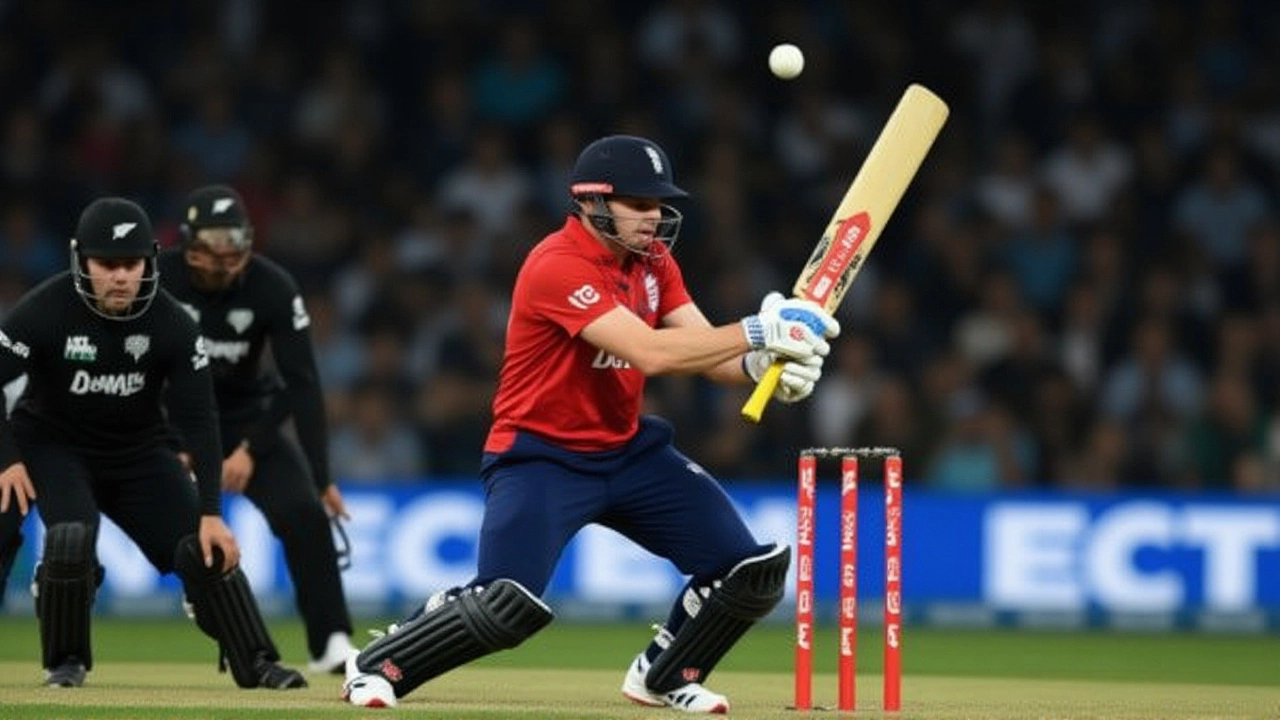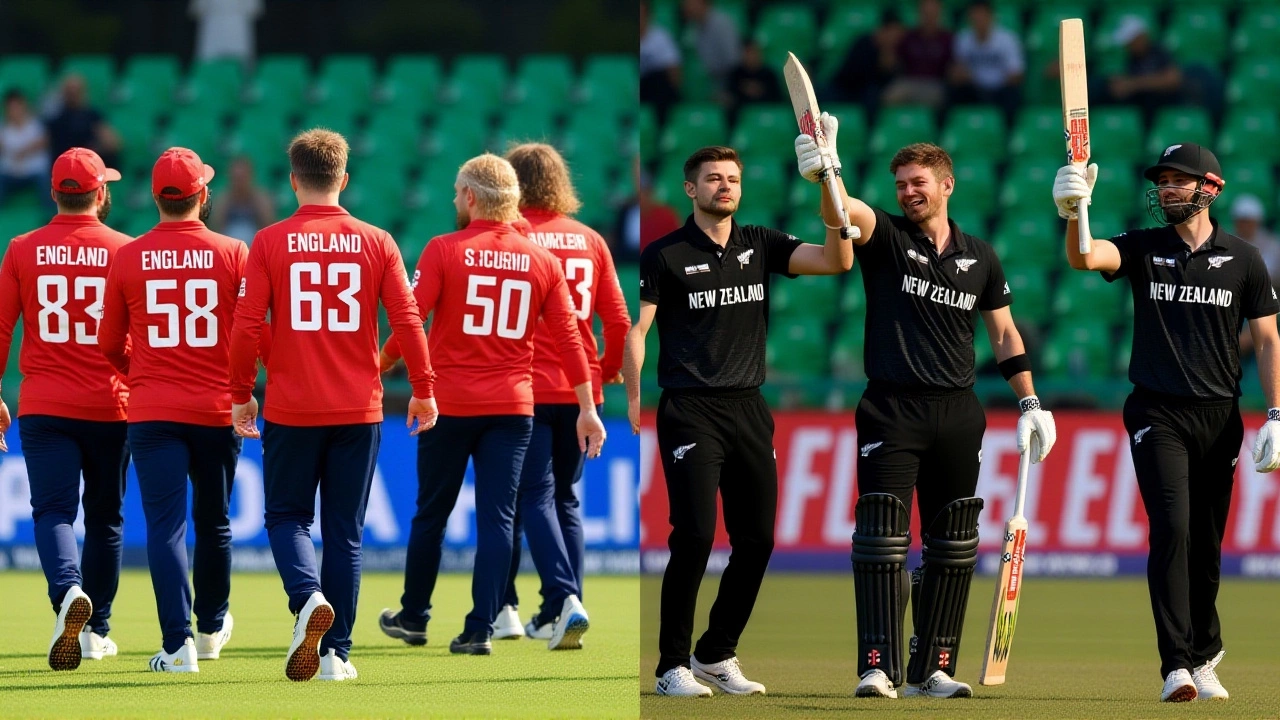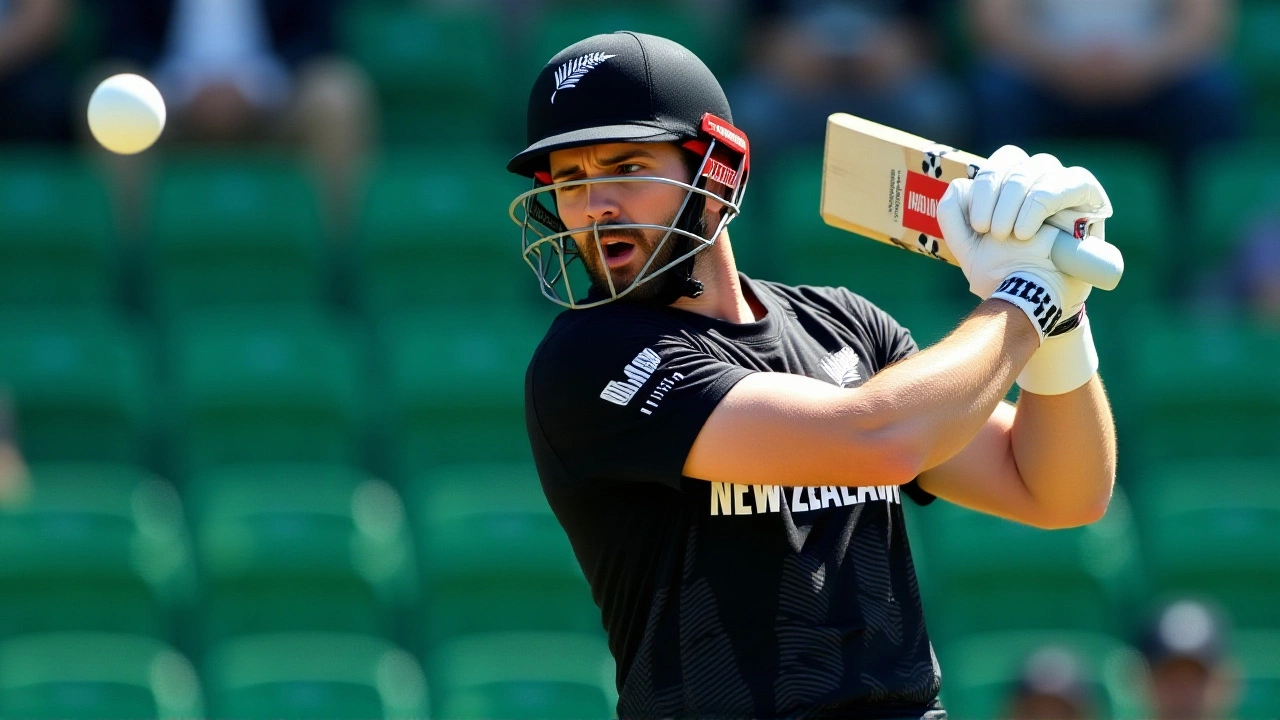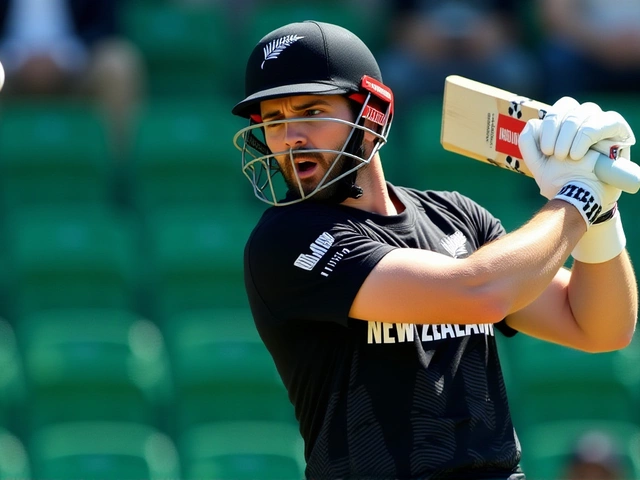When New Zealand Cricket unveiled its white‑ball line‑up for England’s tour, the headline wasn’t just the names on the sheet; it was the story of comeback, injury drama and a squad gearing up for a World Cup run.
The three‑match T20 series kicks off on October 18, 2025, at Hagley Oval in Christchurch, with Mitchell Santner resuming captaincy after a recent abdominal operation. A week later, the ODIs shift to Bay Oval in Tauranga – Williamson’s hometown – where Kane Williamson makes his long‑awaited return.
Why this squad matters
New Zealand’s white‑ball side has been in a rebuilding phase since the Champions Trophy final loss to India on March 9, 2025. The coaching baton passed to Rob Walter in the off‑season, and his first test is against a quality England side that arrived in New Zealand hungry for points.
Walter’s statement summed it up: “Kane and Nathan have had to work hard to overcome their respective injuries and illness. We all know what Kane means to the Black Caps – to have his skill, experience and leadership back in the group is fantastic.”
That sentiment reflects a broader narrative: the Black Caps are not just pulling together a team for a two‑week series, they’re laying groundwork for the 2027 ICC Cricket World Cup in South Africa.
Squad breakdown – T20s and ODIs
In the T20 squad, Santner leads a blend of seasoned pacers and young all‑rounders. Jacob Duffy, Zak Foulkes, Matt Henry and Kyle Jamieson form a pace quartet that stayed untouched despite Ben Sears’ hamstring setback. Spin duties fall to Michael Bracewell, while Tim Seifert is the designated wicket‑keeper. The most notable returnees are Santner himself and 22‑year‑old prodigy Rachin Ravindra, who recovered from a facial injury that ruled him out of the Australian series.
The ODI roster expands to 14 players, adding depth in the middle order. Devon Conway, Mark Chapman and Tom Latham (behind the stumps) provide firepower, while Nathan Smith (27) comes back after an abdominal injury suffered in the second test against Zimbabwe on August 15, 2025. The line‑up also includes all‑rounder Jimmy Neesham, whose recent exploits against Australia earned him a seam‑bowling slot.
Injury list – who’s missing
New Zealand still carries a heavy injury burden. Apart from Sears, the list includes:
- Mohammad Abbas – ribs
- Finn Allen – foot
- Lockie Ferguson – hamstring
- Adam Milne – ankle
- Will O'Rourke – back
- Glenn Phillips – groin
The medical staff says most players are on track to recover before the World Cup qualifiers, but the timing of the England tour forces selectors to balance experience with fitness.

What Williamson’s comeback means
Williamson, 35, has not worn the Black Caps jersey since the Champions Trophy final in Lahore. He missed the T20 leg because of a “minor medical issue” that NZC prefers not to detail. The hiatus stretched his international absence to more than a year, a gap that would have seemed unlikely for a player who’s New Zealand’s all‑time leading run‑scorer in Tests.
During the winter, he kept sharp playing for the London Spirit franchise in the Hundred and turning out for Middlesex in the County Championship. Those stints helped him maintain form, but the desire to finish his career on his own terms – possibly as a World Cup captain – appears to be driving his return.
“It’s nice to be back amongst the group. There’s been quite a bit of change since the last time I was here, so it’s nice to meet the new coach and some new players as well,” Williamson told NZC. “I’m looking forward to the start of the series.”
Schedule and venues
The T20 fixtures are set as follows:
- October 18 – Hagley Oval, Christchurch
- October 20 – Hagley Oval, Christchurch
- October 22 – Hagley Oval, Christchurch
The ODI itinerary moves the action around the North Island:
- October 26 – Bay Oval, Tauranga (Williamson’s hometown)
- October 29 – Seddon Park, Hamilton
- November 1 – Basin Reserve, Wellington
Each venue has a distinct pitch profile, offering a mix of seam‑friendly conditions in Hamilton and slower, spin‑aiding surfaces in Tauranga. Analysts expect the Black Caps to target the first match in Tauranga to build momentum, especially with Williamson looking to cement his place.

Broader impact – World Cup road map
Walter framed the series as “the start of our journey to the ICC Cricket World Cup in South Africa in 2027.” The core idea is to solidify a stable core of batters – Conway, Williamson, Chapman – while giving the pacers enough game time to fine‑tune lengths ahead of the qualifying tournament.
Statistically, New Zealand’s white‑ball win‑loss ratio in the last 12 months sits at 58%, a dip from the golden years of 2019‑2021. Adding Williamson’s experience could boost the team’s batting average by an estimated 8‑10 runs per innings, according to a recent ESPN‑cricinfo analysis.
On the flip side, England’s touring side arrives with a packed schedule, having wrapped up a two‑week series in the West Indies. Their squad is relatively injury‑free, meaning the Black Caps will need to rely on depth rather than star power alone.
What’s next for the Black Caps?
After the England tour, New Zealand faces a bilateral series against South Africa in early 2026, a crucial part of the World Cup qualifying ladder. The performances in Christchurch, Tauranga, Hamilton and Wellington will likely dictate selection windows for that series.
Fans and pundits alike will watch how quickly Santner settles back into captaincy after his surgery, and whether the younger all‑rounders – Ravindra, Smith, Neesham – can translate domestic form onto the international stage.
Frequently Asked Questions
How does Kane Williamson’s return affect New Zealand’s batting line‑up?
Williamson adds a veteran’s composure and a proven 50‑plus average in ODIs. His presence pushes the middle order up the batting order, giving Devon Conway and Mark Chapman more flexibility. Analysts expect an average increase of 8‑10 runs per innings, which could be decisive in tight matches.
What injuries are still sidelining key Black Caps players?
Aside from fast bowler Ben Sears’ hamstring, the squad is missing Mohammad Abbas (rib strain), Finn Allen (foot), Lockie Ferguson (hamstring), Adam Milne (ankle), Will O'Rourke (back), and Glenn Phillips (groin). Their recoveries are monitored closely, with hopes they’ll be fit for the 2027 World Cup qualifiers.
Why is the ODI series in Tauranga considered pivotal?
Bay Oval’s slower pitch favours spin and anchors the batting, a setting where Williamson excels. A win in his hometown would boost morale ahead of the World Cup campaign and give the coaching staff a clear view of the team’s balance under pressure.
What does coach Rob Walter expect from the England tour?
Walter sees the series as a benchmark for squad depth. He wants Santner to regain his tactical edge, for the pacers to test new combinations, and for the emerging all‑rounders to prove they belong at the international level.
How does this series fit into New Zealand’s World Cup preparation?
The England tour is the first major white‑ball challenge after the off‑season. Performances will shape the core group heading into the 2027 World Cup qualifiers, especially the balance between experienced hands like Williamson and the form of younger talent such as Rachin Ravindra.

